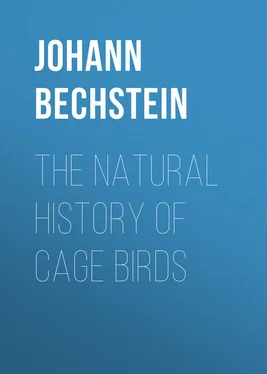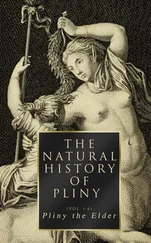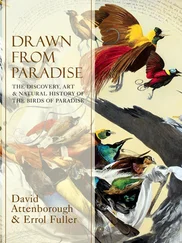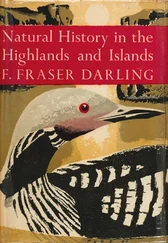Johann Bechstein - The Natural History of Cage Birds
Здесь есть возможность читать онлайн «Johann Bechstein - The Natural History of Cage Birds» — ознакомительный отрывок электронной книги совершенно бесплатно, а после прочтения отрывка купить полную версию. В некоторых случаях можно слушать аудио, скачать через торрент в формате fb2 и присутствует краткое содержание. ISBN: , Жанр: foreign_antique, foreign_prose, на английском языке. Описание произведения, (предисловие) а так же отзывы посетителей доступны на портале библиотеки ЛибКат.
- Название:The Natural History of Cage Birds
- Автор:
- Жанр:
- Год:неизвестен
- ISBN:http://www.gutenberg.org/ebooks/40055
- Рейтинг книги:4 / 5. Голосов: 1
-
Избранное:Добавить в избранное
- Отзывы:
-
Ваша оценка:
- 80
- 1
- 2
- 3
- 4
- 5
The Natural History of Cage Birds: краткое содержание, описание и аннотация
Предлагаем к чтению аннотацию, описание, краткое содержание или предисловие (зависит от того, что написал сам автор книги «The Natural History of Cage Birds»). Если вы не нашли необходимую информацию о книге — напишите в комментариях, мы постараемся отыскать её.
The Natural History of Cage Birds — читать онлайн ознакомительный отрывок
Ниже представлен текст книги, разбитый по страницам. Система сохранения места последней прочитанной страницы, позволяет с удобством читать онлайн бесплатно книгу «The Natural History of Cage Birds», без необходимости каждый раз заново искать на чём Вы остановились. Поставьте закладку, и сможете в любой момент перейти на страницу, на которой закончили чтение.
Интервал:
Закладка:
In the account of each bird I shall point out what shaped cage I have found most suitable.
In every case cleanliness is absolutely necessary, in order to keep birds a long time, as well as healthy and active. In general it is better not to disturb the birds very often; but if not every day, yet every week at furthest, it is necessary to clean even the perches of those that roost, and strew sand where they keep at the bottom. Negligence in this entails many inconveniences, – unpleasant smells from sick birds, gouty feet to some birds, loss of the use of their limbs or all their claws; such sad experience may at length cure the negligent amateur. “We love birds,” they say; “No,” I reply, “you love yourselves, not them, if you neglect to keep them clean.”
In washing the feet of birds they must first be soaked in warm water, or the dirt will be so pasted on the skin that in removing it the bird will be wounded, and the irritation thus excited may soon occasion dangerous ulcers. House birds are generally subject to sore feet, and great attention is therefore necessary to examine them often if they are not attacked; a hair wound round them will sometimes become drawn so tight that in time the part will shrivel up and drop off. Another proof of the necessity of care in cleaning is, that few birds preserve their claws after having been kept some years in the house. It must be confessed, however, that among birds of the same species there is a very marked difference in this respect, some being always extremely clean, whilst others are for ever dirty, and seldom clean themselves. There are also some species in which cleanliness seems an innate quality; among these are yellow hammers, reed buntings, and linnets; the latter especially have always appeared to me patterns of neatness, and though I have had many, I do not recollect being obliged to clean the feet of any, whilst larks and fauvettes have them always dirty, and let them fester with ulcers rather than take the trouble to clean them 6 6 This perhaps depends on the peculiar forms of the bills more than on inclination, for the fauvette and blackcap often attempt to clean their feet without success. – Translator.
.
Many amateurs amuse themselves with taming their birds so completely that they can let them fly out of a window and recall them at pleasure. A friend of mine, who tamed not only birds, but also adders, otters, weasels, foxes, and the like, knew how to render them so familiar that at the least sign they would follow him anywhere. This method was as easy as it was sure, and I can judge of it from having been an eye-witness to the effect; it is as follows:
When he wishes to accustom a bird to fly out and return, or go out of doors perched on his hand or shoulder, he begins by opening the cage and teazing the bird with a feather. The bird soon pecks at it, then at the finger, and at last ventures outside the cage to fly on the finger presented to it. My friend then caresses it, and gives it something nice to eat, so that it soon becomes accustomed to feed on the hand. When this is attained, he begins to teach it to come at a certain call, and as soon as it will allow itself to be taken, he carries it on his hand or shoulder from room to room, the doors and windows being at first well closed; he also lets it fly about a little, making it return when called. At last, when the bird comes at his call, without hesitation or fear of men or animals, he tries it with precaution out of doors. It thus by degrees becomes so accustomed to him that he can take it into the garden, even in the midst of a large company, without any fear of its flying away.
Great precaution is necessary in spring, and during the pairing season, when taking out old birds that have been thus trained; for, upon hearing the call of their own species, they soon fly off to resume their wild state. Young linnets, bullfinches, and canaries, are the species with which this method succeeds best.
FOOD OF TAME BIRDS
It is very necessary to procure for house birds food which is like, or at least which nearly resembles, what they would procure for themselves in their wild state. This is rather difficult, and sometimes almost impossible, for where can we find in our climate the seeds on which the Indian birds feed in their own country? Our only resource then is to endeavour, with judgment, to accustom these birds to that food which necessity obliges us to give them. There are some birds, such as chaffinches, bullfinches, thrushes, and the Bohemian chatterer, which are so manageable in this respect, that as soon as they are brought into the house they eat without hesitation anything that is given to them; but others, which are more delicate, will absolutely eat nothing, either through disgust of their new food, or despair at the loss of their liberty; with these great precaution is necessary. Dr. Meyer, of Offenbach, writes to me on this subject as follows: “The following is the best method of accustoming newly-taken birds to their change of food, a thing which is often very difficult to accomplish with some species. After having put the bird in the cage it must be left quiet for some hours, without disturbing it at all; it must then be taken and plunged into fresh water, and immediately replaced in the cage. At first it will appear faint and exhausted, but it will soon recover, arrange its feathers, become quite lively, and will be sure to eat whatever is given to it. It is a well known fact that bathing gives an appetite to birds, for the same reason that it does to men.”
If, as an exception, one of these delicate birds, among which are most of the songsters, eats with eagerness as soon as it is brought into the house, it is a sign of death, for it seems like an indifference which is not natural, and which is always the consequence of disease. Those birds which retire into a corner, moping for some hours, are the most likely to live; it is only requisite to leave them alone, and by degrees they recover from their sullenness.
In order to give some general rules for the best food for house birds, I have divided them into four classes: —
The first comprehends those birds which live only on seeds, such as canaries, goldfinches, and siskins.
The second are those which feed on both seeds and insects, such as quails, larks, chaffinches, and bullfinches; some of these also eat berries and the buds of trees.
The third are those which seek only berries and insects, such as nightingales, red-breasts, thrushes, and fauvettes.
The fourth are those which eat insects only, such as wagtails, wheatears, stonechats, and blue-breasts.
The species in this last class are the most difficult to preserve; but most of them, having nothing particular in their song, offer no compensation for the trouble and care which they require; but the following is the best method for success. After having collected the flies, which in spring may often be seen in great numbers on the windows of old buildings, they must be dried, and preserved in a jar. When live insects can no longer be found, these flies must be mixed with the paste, hereafter described, which may be regarded as a general or universal food, and given to the most delicate birds, such as nightingales, provided ants’ eggs or meal worms are now and then mixed with it.
Recipe for the general food. – In proportion to the number of birds, white bread enough must be baked to last for three months. When it is well baked, and stale, it must be put again into the oven, and left there until cold. It is then fit to be pounded in a mortar, and will keep several months without becoming bad. Every day a teaspoonful for each bird is taken of this meal, on which is poured three times as much cold, or lukewarm, but not boiling, milk. If the meal be good, a firm paste will be formed, which must be chopped very small on a board. This paste, which is very nourishing, may be kept a long time without becoming sour or sticky; on the contrary, it is always dry and brittle. As soon as a delicate bird is brought in, some flies or chopped worms should be mixed with the paste, which will attract it to eat. It will soon be accustomed to this food, which will keep it in life and health.
Читать дальшеИнтервал:
Закладка:
Похожие книги на «The Natural History of Cage Birds»
Представляем Вашему вниманию похожие книги на «The Natural History of Cage Birds» списком для выбора. Мы отобрали схожую по названию и смыслу литературу в надежде предоставить читателям больше вариантов отыскать новые, интересные, ещё непрочитанные произведения.
Обсуждение, отзывы о книге «The Natural History of Cage Birds» и просто собственные мнения читателей. Оставьте ваши комментарии, напишите, что Вы думаете о произведении, его смысле или главных героях. Укажите что конкретно понравилось, а что нет, и почему Вы так считаете.












